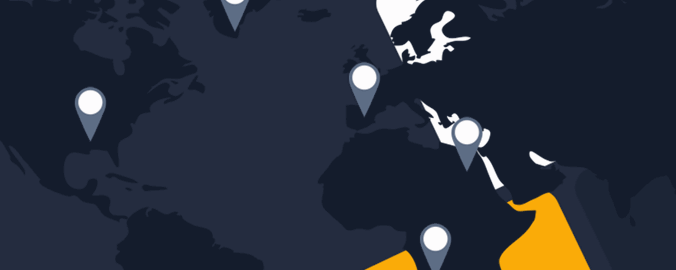
Area Guide – Usa
The information below covers some interesting data about the USA, its people, history and geographical details. You will also find some useful facts for travellers to the USA.
As the third largest country in the world after Russia and China, the USA’s vast territory covers an area of over 9.6 million sq. km (3.7 million square miles) and consists of 50 states with several dependent territories. The USA is bordered in the north by Canada, in the south by Mexico and to the east and west by the Atlantic and Pacific Oceans respectively. The state of Alaska is flanked by the Arctic Ocean and Canada, while Hawaii nestles in the warmth of the Pacific Ocean.
The climate of the USA is governed by the geography and vastness of the country and unsurprisingly every type of global climate can be found here. On the east coast and around the Great Lakes, the climate is temperate with warm wet summers. Further west on the plains or prairies, the climate is more arid and extreme while in Nevada and the southwest, there is a typically dry desert environment. California boasts a Mediterranean climate with warm, dry summers and winter rain while the southern areas of Florida and Louisiana are sub-tropical. Between Hawaii and Alaska the largest climatic contrasts are outstanding: Hawaii with its lush, tropical setting and Alaska with its Arctic climate and freezing winters.
The original inhabitants of the USA were the native Americans who throughout the eighteenth and nineteenth centuries came increasingly into conflict with the European settlers as they pushed further west in their quest for land. The biggest crisis for the native Americans arose through the decimation of the buffalo population that was shot out during the building of the railways to the west. They depended on buffaloes for food and clothing and soon became weakened, losing their land to the settlers.
The settlement policy of the USA started with the Pilgrim Fathers and welcomed all who had suffered from persecution in Europe. The USA started life as a British Colony, but in the war of 1775 to 1783 the Americans fought for, and won, their independence from Britain. Later the Civil War was fought to abolish slavery, amongst other factors and the USA took its first steps to becoming the large multicultural and multiracial mix it is today.
Today the USA is one of the most prosperous nations in the world and has a large population with every ethnic mix conceivable. Immigration to the USA is not as easy as it once was and a strict quota system applies. For those wanting to live and work in the USA, a Green Card is essential and as there are various routes to obtaining one of these. We recommend you employ the services of a professional who can advise you on the best route for your circumstances.
Information Required When Travelling to the USA
Visas:
European Union citizens travelling to the USA are part of the Visa Waiver Programme provided they conform with the following conditions:
Do not intend to stay more than 90 days Have a machine readable passport Passport must have a computer chip if it was issued after October 25th 2006.
Vaccinations:
No vaccinations are necessary for those entering the USA, under the visa waiver programme.
Time Zone:
Several time zones span the USA :
- Eastern Standard Time (EST) GMT –5 hours
- Central Standard Time (CST) GMT –6 hours
- Mountain Standard Time (MST) GMT –7 hours
- Pacific Standard Time (PST) GMT –8 hours
- Alaska Standard Time (AKST) GMT –10 hours
- Hawaii Standard Time (HST) GMT –10 hours
Electricity:
110 – 120 V 60 Hz
Weights and Measures:
All weights and measures are imperial with the exception of liquids. The USA gallon is smaller than the imperial measure.
Tel. Dialing Code:
00 + 1 + area code + phone number
Healthcare in the United States
Medical facilities in the USA are among the most advanced in the world. Hospitals and clinics are private and have up to date equipment where patients can receive the best treatment, but it is very expensive and you may even need further treatment to recover from the shock of the bill!
There is no form of national insurance in the USA, nor are there any reciprocal medical arrangements with either the UK or Europe. We strongly advise that you have good medical insurance to take care of any emergencies and preferably the type of insurance that pays the bill direct to the hospital services, without requiring you to wait for reimbursement upon your return home. The UK Foreign Office website recommends that insurance for the USA should have a cover of at least $1,000,000 and include evacuation to your home country.
Furthermore it is advisable to make sure that you will not need any dental care while you are in the USA as, while it is the best in the world, it is also the most expensive. Unfortunately no insurance policies cover dental care so a dental check before you go to the USA could prevent you from paying hefty sums.
At the present time there are no particular health risks linked with travel in the USA, although it is wise to take precautions against being bitten by mosquitoes as in some regions of the USA and Canada there is a risk, albeit very low, of contracting Nile Fever.
Water is usually safe to drink, as the USA has a highly developed purification system. However bottled water is most popular and many people choose to drink it in preference to tap water.
American Cuisine
Far from the stereotypical picture of cuisine in the USA consisting solely of fast food, the variety of immigrant populations, ingredients and regions has led to an exciting and diverse cuisine. Here you can read about the influences in each region.
From the time the Pilgrim Fathers landed on the rocky shores of the USA and had their first Thanksgiving dinner, immigrants to the country have brought their own recipes and traditions. Here they made do with, and adapted, the ingredients that were available, leading to a cuisine that, in many regions, has become quite unique to the area.
In these pages, it is impossible to give a complete picture of the huge range of culinary delights available and what follows is intended to whet your appetite for further exploration.
The North – New England and New York
New York with its diverse cultural mix offers the most wide-ranging selection of cuisine from every part of the world that one can imagine. A profusion of delicatessens offer this the most tempting dishes of many nationalities including, Jewish, Italian, Russian and Greek.
New England cuisine is based upon the wonderful seafood's found in abundance on the coast while firm favourites are clam chowder, Boston baked beans and lobster thermidor. Many dishes are typified by the use of dairy products and slow cooking methods.
California
The Gold Rush had one of the biggest influences on food in California and later the rest of the USA. Chinese workers were brought in to work on the mines and railways and it is here that the ubiquitous chop-suey was born.
Today Californian cuisine is a fusion of many exotic influences from a wide variety of immigrant groups. Fare ranges from the simplest take away to the most exclusive restaurants offering dishes from all corners of the world.
The Midwest
Think of the Midwest and immediately cattle ranching springs to mind and this has been a major influence in the cuisine of this region. Food is based on uncomplicated dishes such as pot roasts, sausages, ribs and, of course, the BBQ.
In many parts of the Midwest there are also strong Polish and German influences on the cuisine.
The South – Cajun and Creole Cuisine
Cajun cooking can be found in the area known as the Acadian triangle, ranging from West Texas to the Mississippi and diners can sample delicious typical dishes such as Jambalaya.
Creole, originating from the area in and around Louisiana and the river plantations, offers delights such as delicious gumbo, red beans and rice to name just two among a wide range of choices.
Although there is often an overlap in dishes, the main difference between Cajun and Creole cooking lies in style, Cajun is based on rustic French cooking while Creole is derived from more classic French cuisine.
Texmex
Texmex is found all over the States but originates in those states closest to the border with Mexico. The dishes to be enjoyed in this style of cooking are enchiladas, burritos and chilli con carne.
Native American
Native American cuisine uses corn in many of its dishes and there are delicious offerings such as succotash and pone as well as plank grilled salmon.
Driving in the USA
50 states make up the USA and laws can differ slightly from one state to another. It is advisable to ask your car rental company about any differences in rules while there are also a number of tour books offering information about each state. If you are driving in more than one state it is well worth investing in one of these. Throughout the USA motorists must drive on the right.
Generally driving in the USA is safe, but as is the case anywhere in the world, take sensible precautions such as keeping your valuables and possessions out of sight and don’t carry large amounts of cash and jewelry with you.
Some inner city areas should be avoided as cars driven by foreign tourists can sometimes be targeted. These areas have been well publicised in the past and drivers should plan their routes accordingly.
Driving Licences
There is no need to carry an International Driver’s Permit in the USA. Your valid driver’s licence is sufficient and valid for one year provided it includes a driver’s photograph. Foreign drivers should also have held their licence for a minimum of one year.
The minimum driving age if you are renting a car is 21 and in some areas, 25. Meanwhile, some rental companies also require special insurance for drivers over 70.
Seat Belts
Seat belts must be worn in the front and the back of the car and children need suitable restraint according to their age. It is possible to rent car seats from the car rental company, but these should be booked in advance.
The Road System
Generally roads are good, but bear in mind that the sheer expanse of the country is reflected in its long straight roads, known as Interstate Highways. It is strongly advisable to take breaks in your journey to keep yourself alert.
Speed Limits
In the US, speed limits vary from state to state and it is important to check them out in accordance with where you are Here are a few to give you an idea of how they can vary:
Florida:
Speed limits are measured in miles per hour (MPH)
Rural interstates
70mph/112kph
Urban interstates
65mph/104kph
Other limited access roads
70mph/112kph
Urban districts
30mph/48kph
Urban Interstates
55mph/88kph
Rural Interstates
75mph/120kph
Other limited access roads
55mph/88kph
Other roads
55mph/88kph
Approaching school crossings
15mph/24kph
Business or residential areas
25mph/40mph
Freeways
65mph/104kph
Hospital Zones
30mph/48kph
Urban Areas - Residential Zone
30mph/48kph
Urban Areas - Business Zone
25mph/40kph
Urban Areas - School Zone
20mph/32kph
Arizona:
Urban Interstates
55mph/88kph
Rural Interstates
75mph/120kph
Other limited access roads
55mph/88kph
Other roads
55mph/88kph
Approaching school crossings
15mph/24kph
Business or residential areas
25mph/40mph
Freeways
65mph/104kph
Hospital Zones
30mph/48kph
Urban Areas - Residential Zone
30mph/48kph
Urban Areas - Business Zone
25mph/40kph
Urban Areas - School Zone
20mph/32kph
California:
Freeways
65mph/104kph
Hospital Zones
30mph/48kph
Urban Areas - Residential Zone
30mph/48kph
Urban Areas - Business Zone
25mph/40kph
Urban Areas - School Zone
20mph/32kph
Emergency Numbers
In the event of any problems while driving, phoning 911 will access the emergency services.


